By the end of this section, you will have experience in the following topics:
- How the model required to use the image processing capabilities of the Gemstone O1 development board is prepared via Edge-AI.
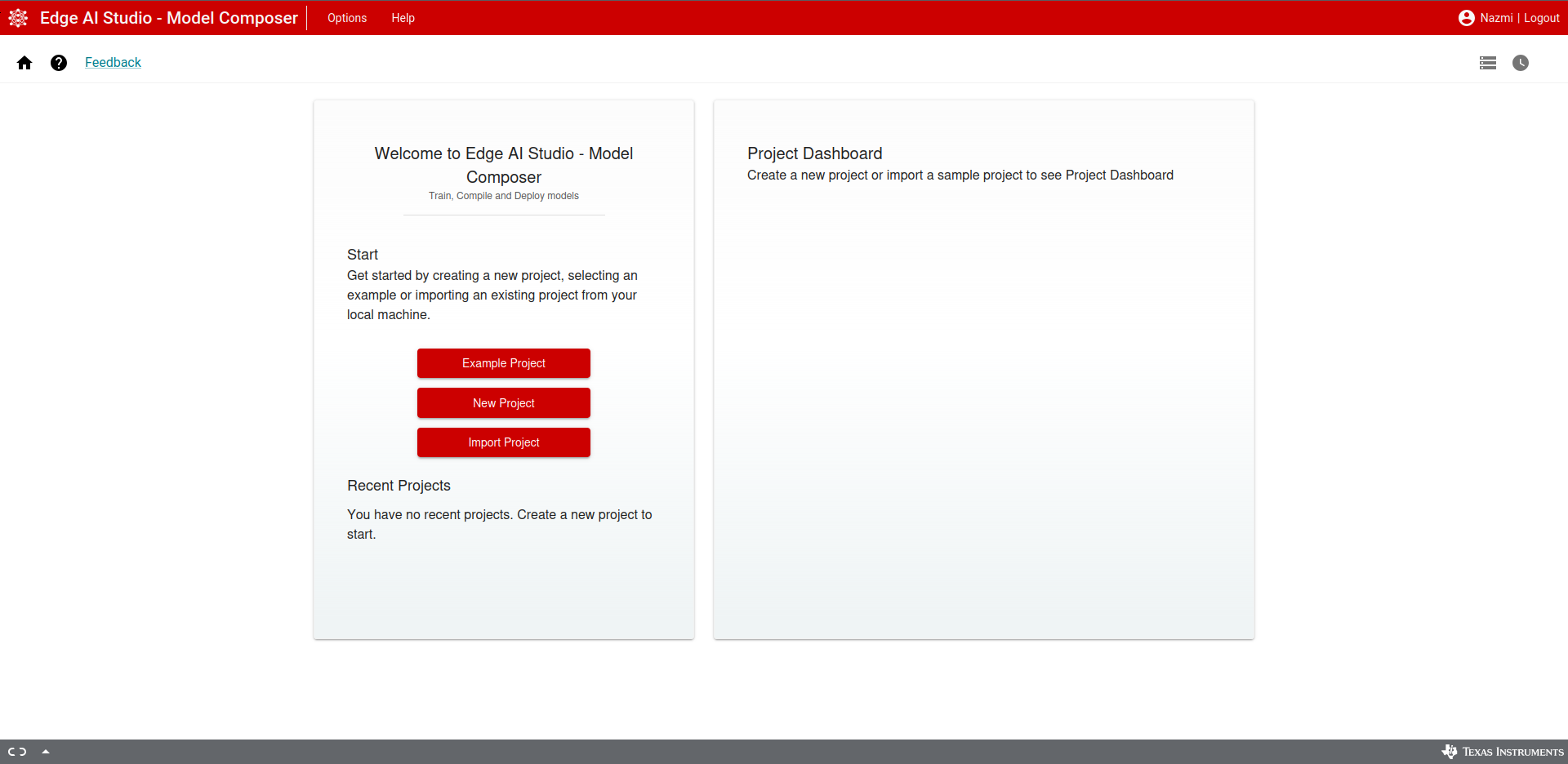
EdgeAI Studio Homepage
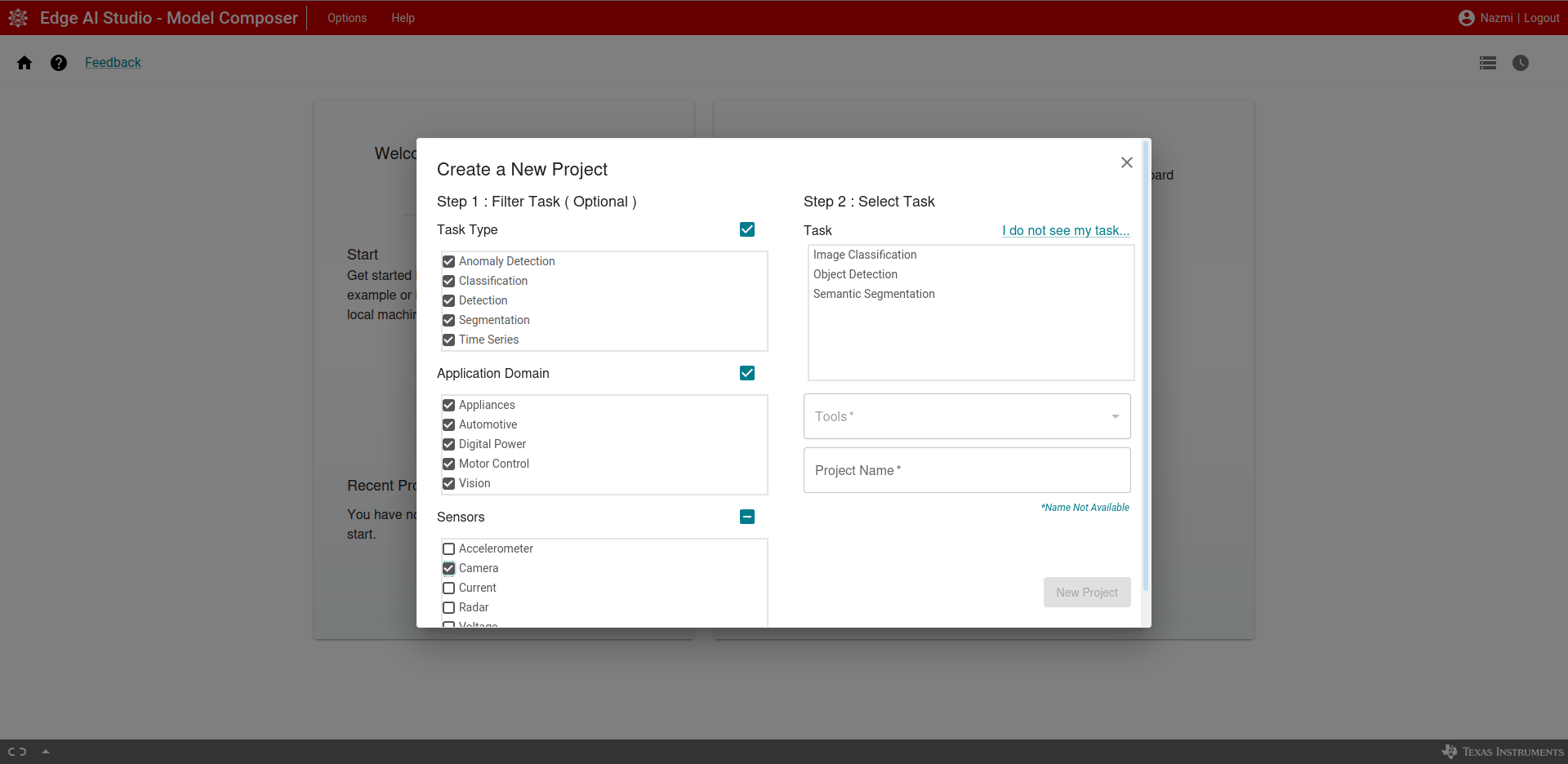
EdgeAI Studio New Project
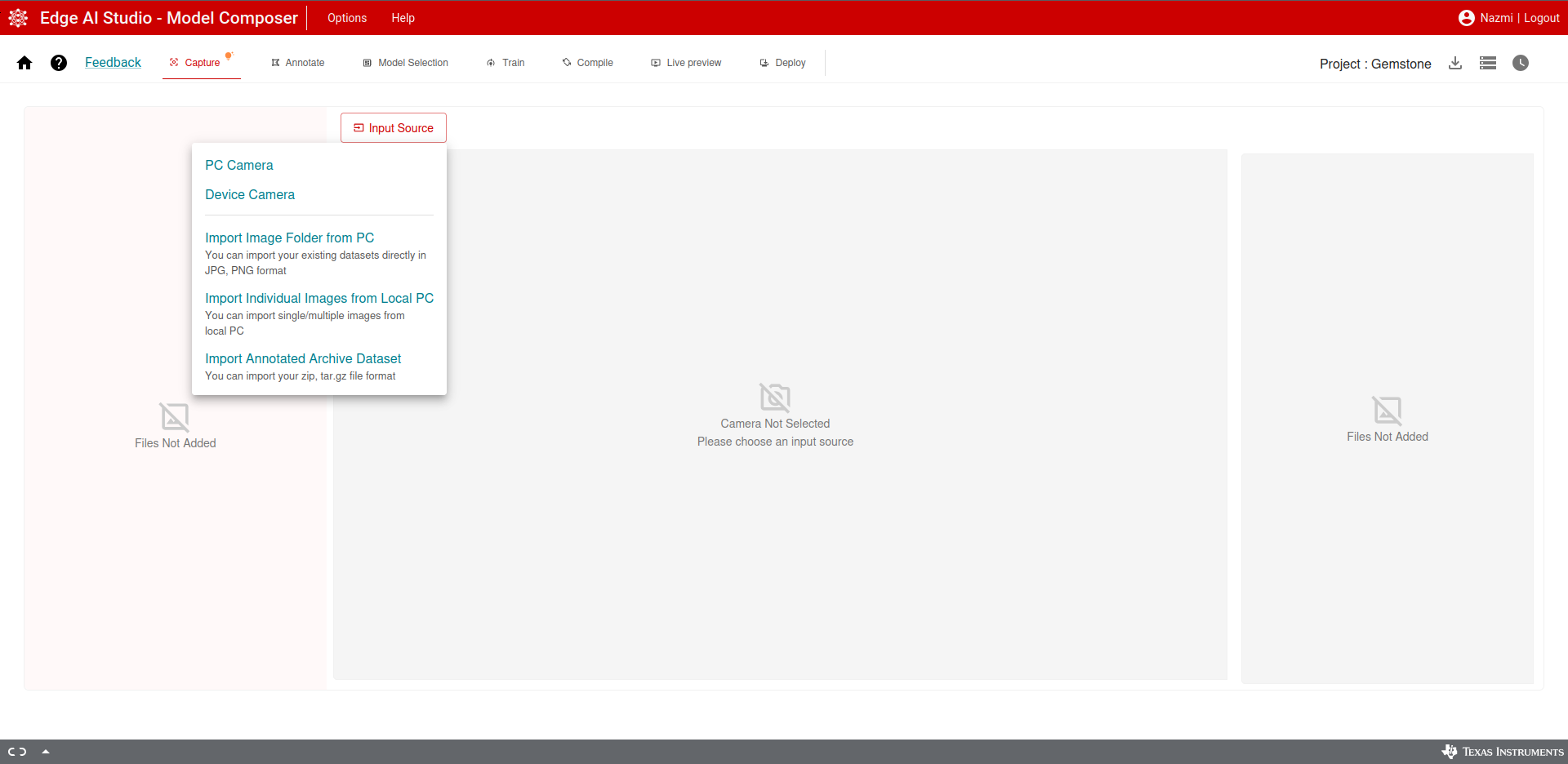
EdgeAI Studio Image Capture
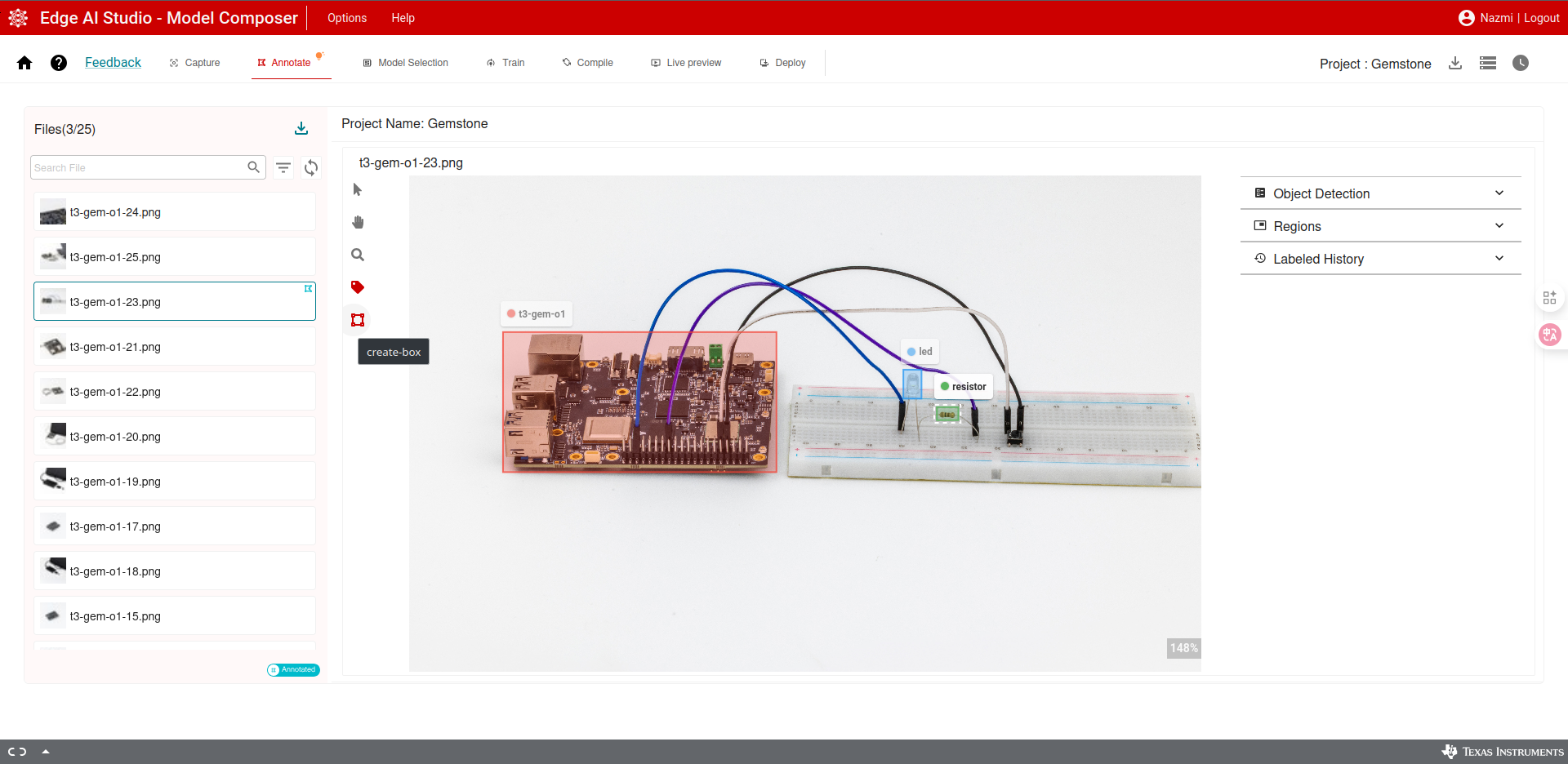
EdgeAI Studio Image Annotation
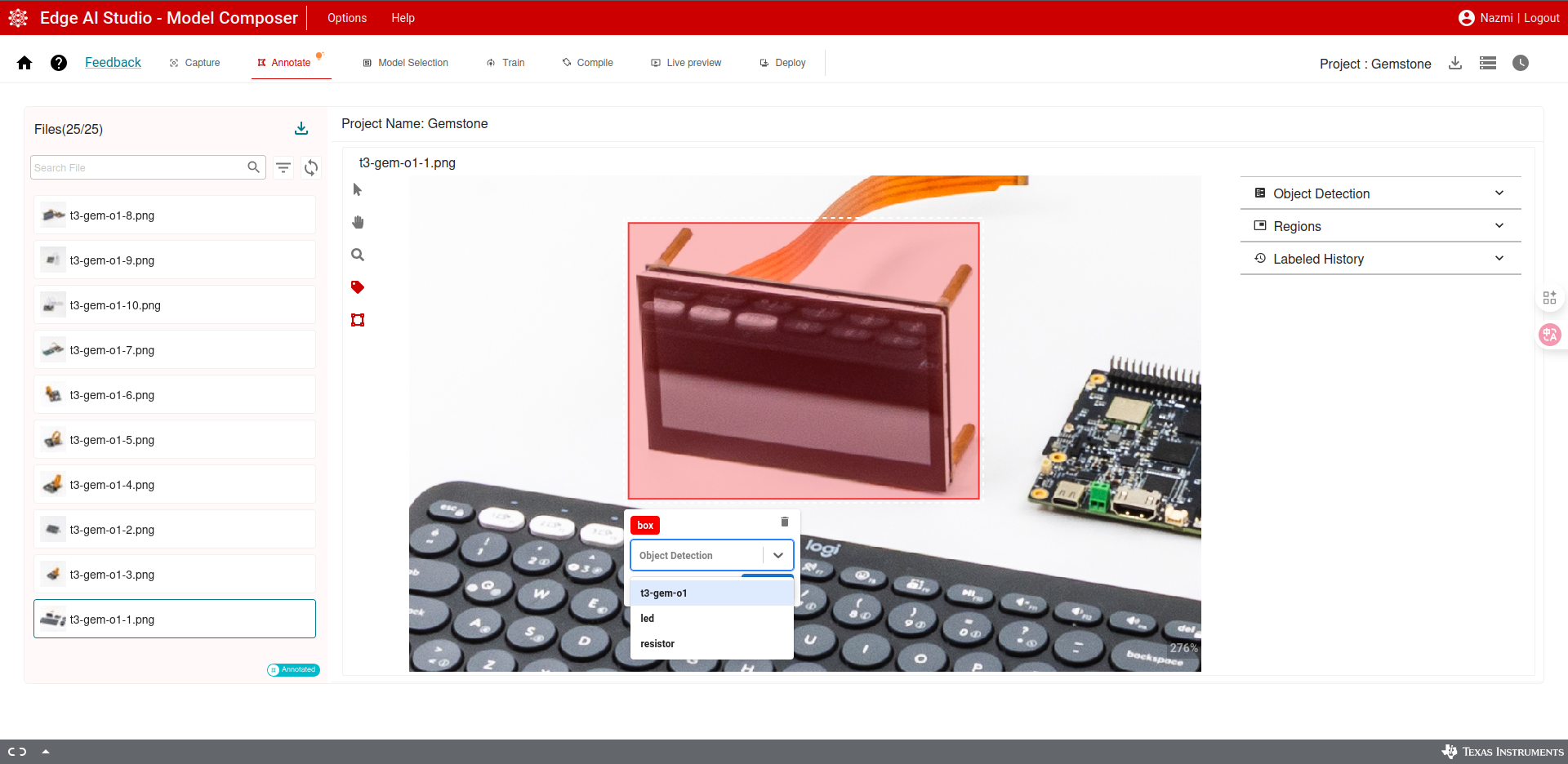
EdgeAI Studio Image Annotation
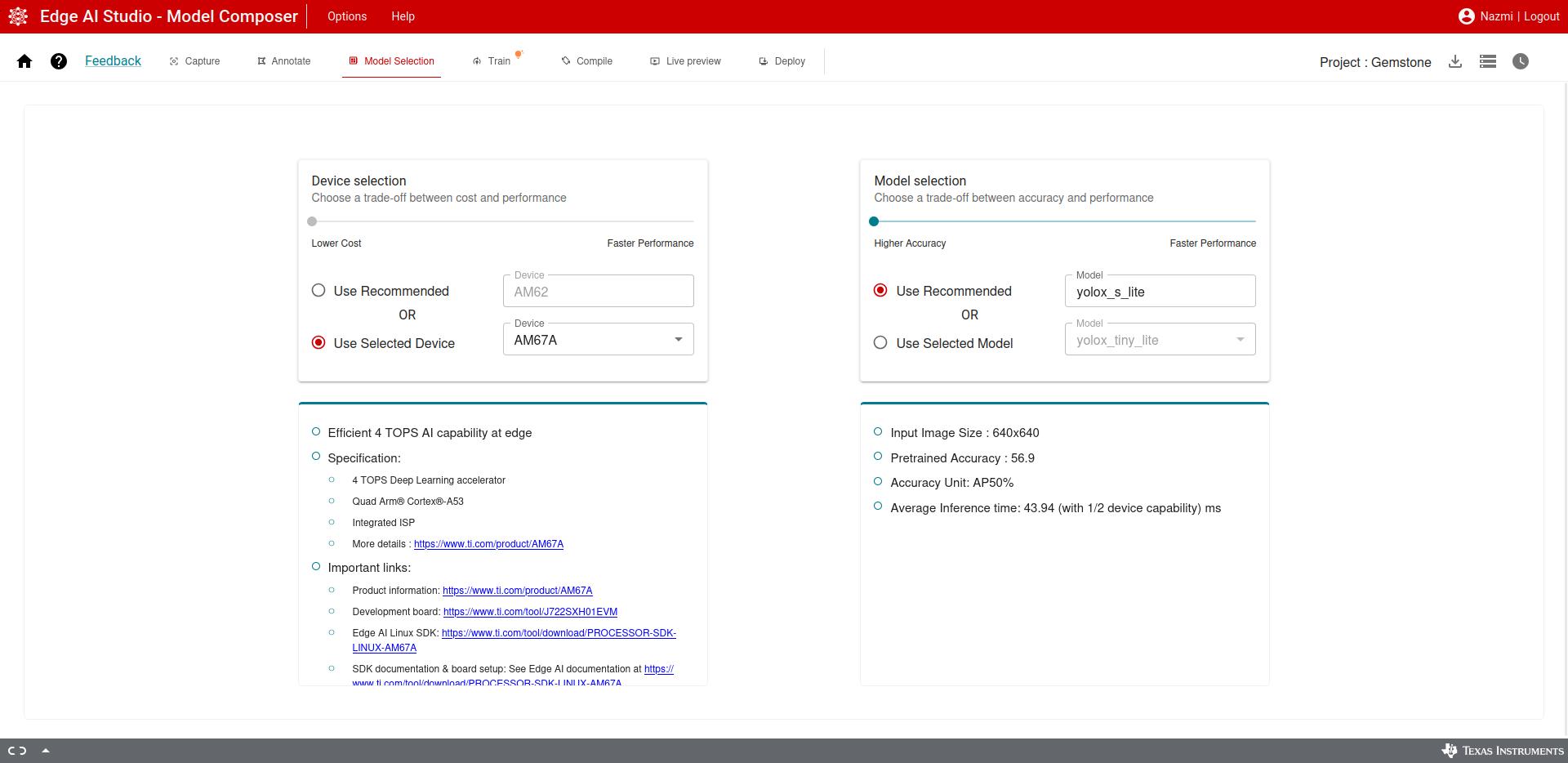
EdgeAI Studio Device and Model Selection
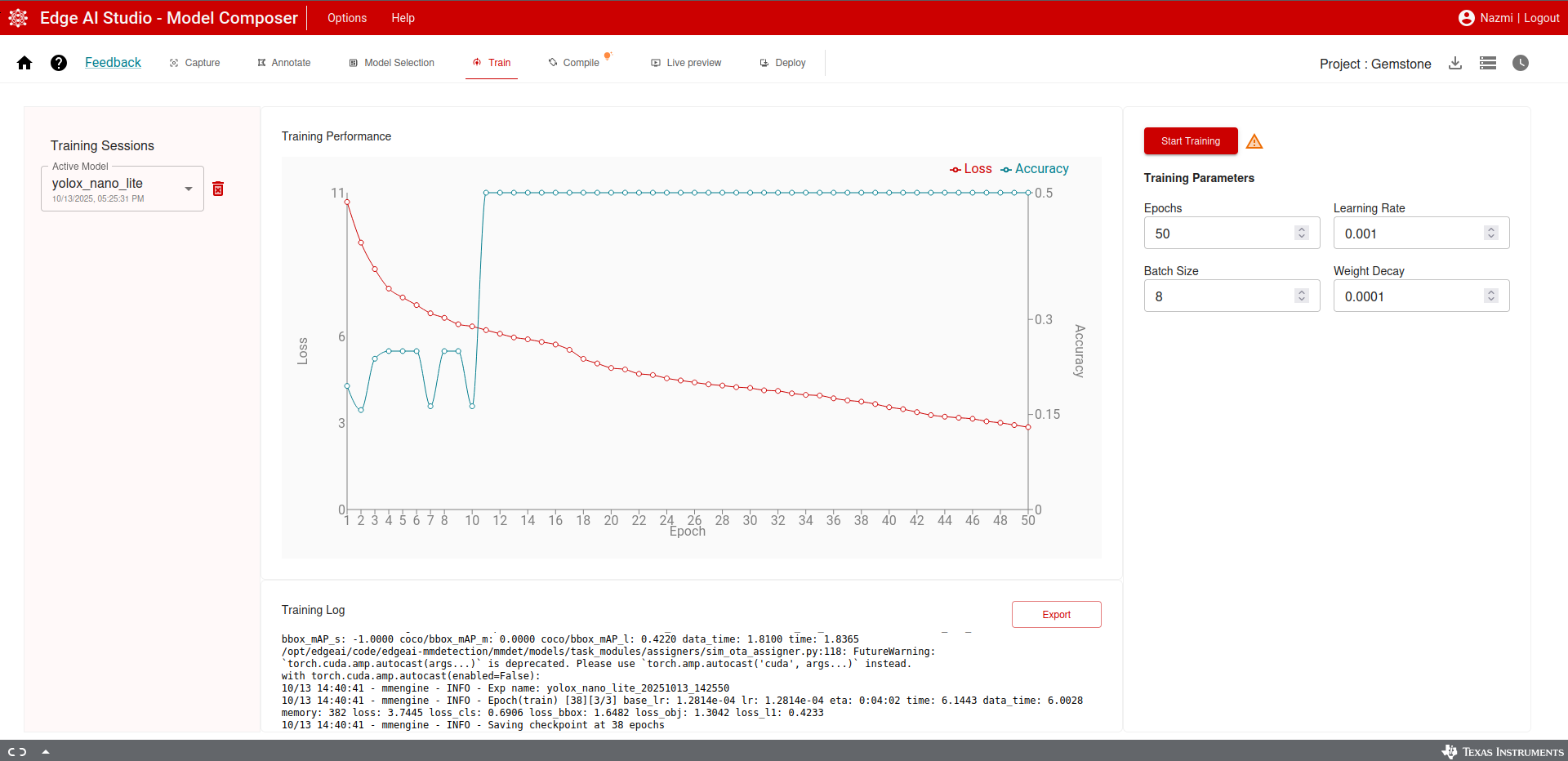
EdgeAI Studio Model Training
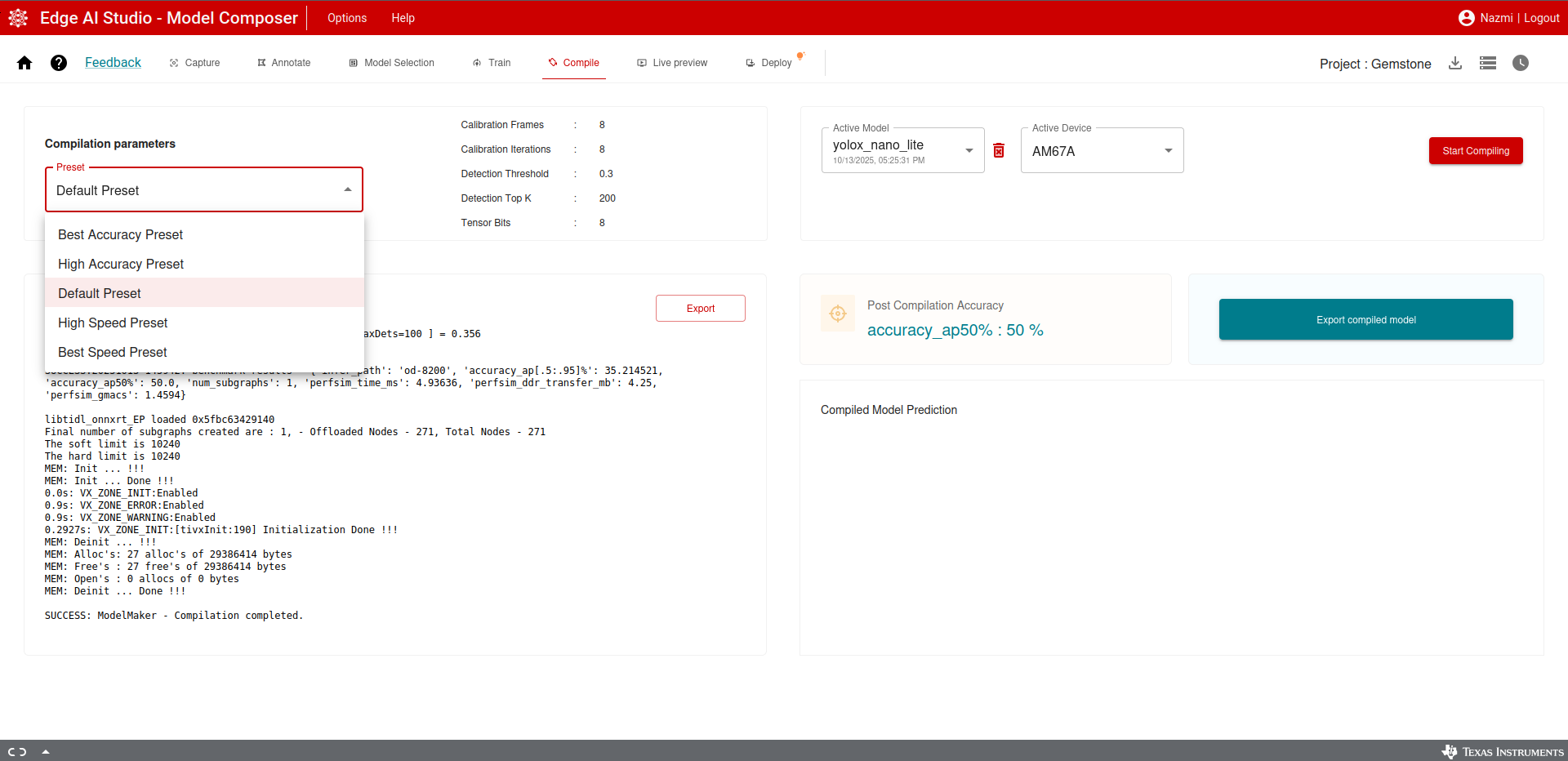
EdgeAI Studio Model Export

